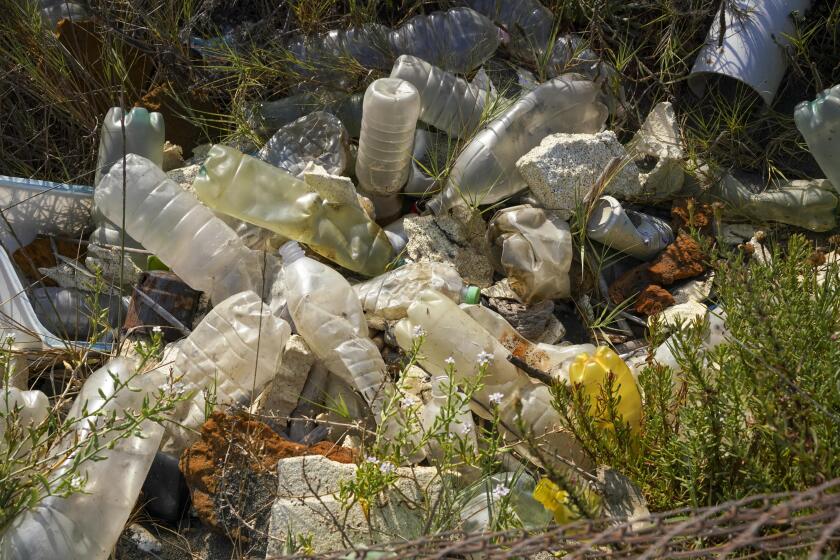Step-by-step: How premium denim is made
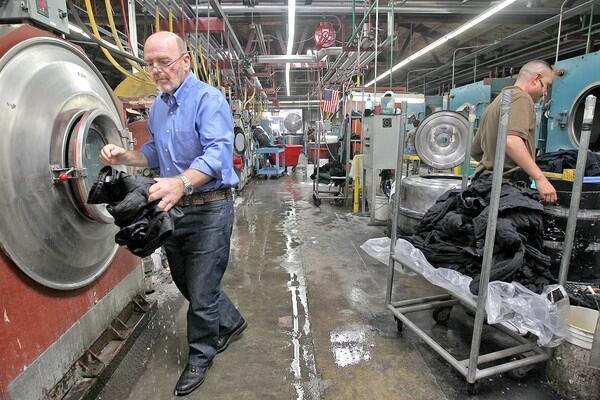
The jeans are thrown into a washing machine with a soap that helps to break down the fabric and contrasts the blue and white yarns. (Christina House / For The Times)
Denim expert Adriano Goldschmied puts the fabric through its paces to achieve an ‘aged’ finish.
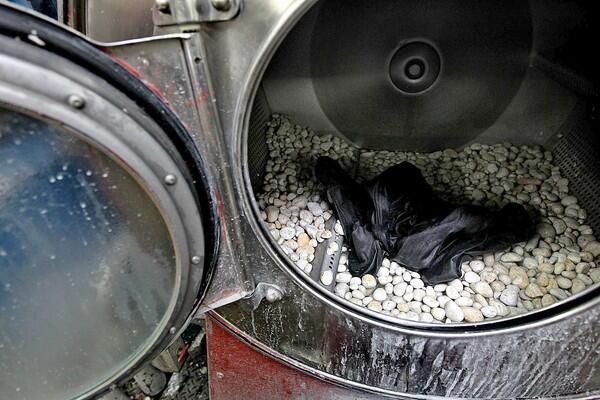
The jeans are then put into an industrial-size washing machine filled about halfway with Turkish pumice stones, which create small abrasions on the edges of pockets and along the hem of the pants. (Christina House / For The Times)
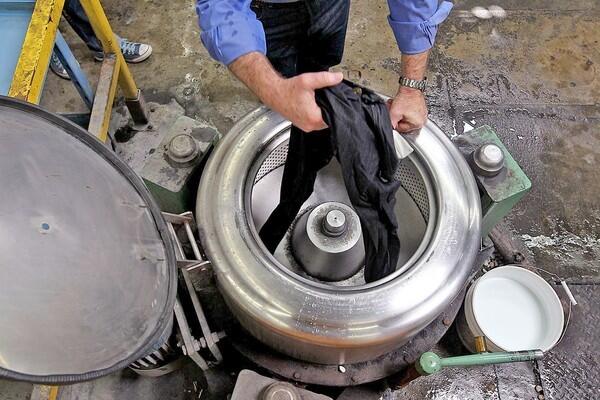
Then the jeans are rinsed in cold water to eliminate the soap as well as any powder or residue formed during the stone-washing process. They are placed in an extractor to remove excess water until they are just slightly damp. (Christina House / For The Times)
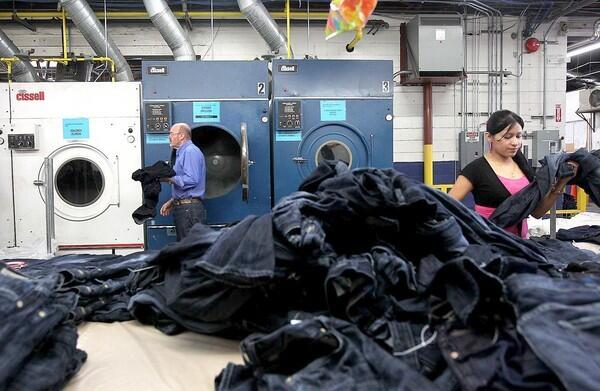
Next? Forty minutes in a 140-degree dryer. (Christina House / For The Times)
Advertisement
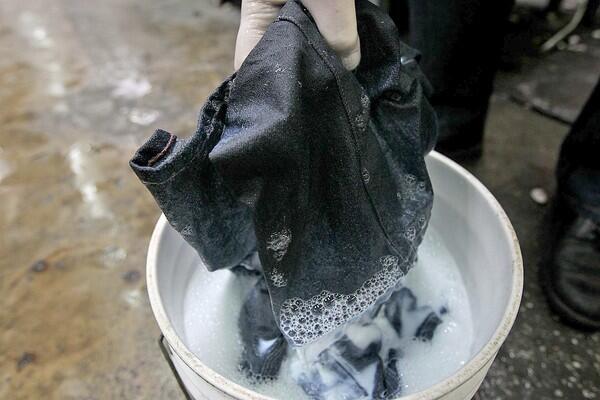
Once dry, the jeans are dipped in a vat of resin to stiffen them and prepare them for the sanding and abrasion process. (Christina House / For The Times)
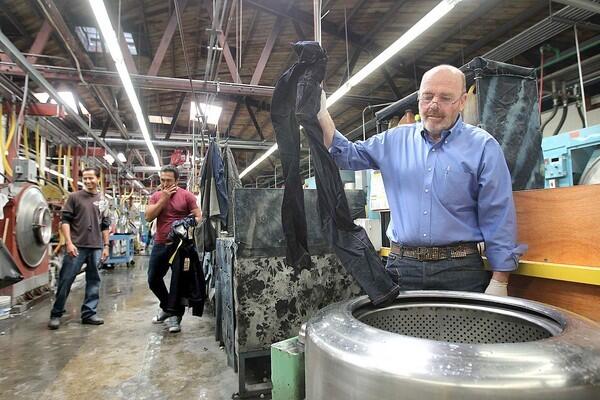
Another trip to the extractor eliminates excess resin. (Christina House / For The Times)
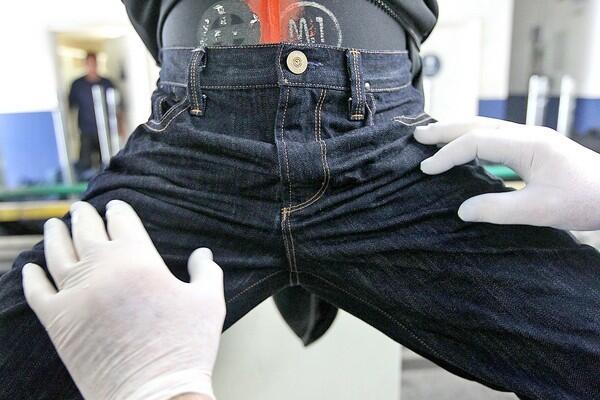
By this point, the jeans begin to exhibit a slightly stiff yet moldable texture ideal for deliberate creases. The pants are pulled onto a machine that is essentially the bottom half of a mannequin to create pleats around the upper thigh area and hip area -- all done by hand, so no two pairs are exactly the same. (Christina House / For The Times)
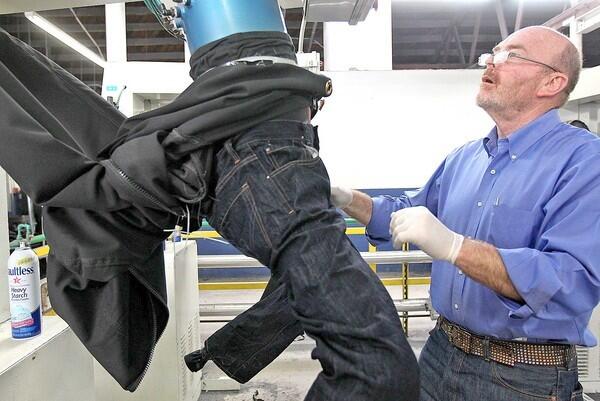
After the desired creases and pleats are made, a large black bag is zipped around the jeans and filled with air heated to 170 degrees. The heat “cures” the resin enough so that the jeans can be removed from the mannequin, hung on a rack and fed into a large 330-degree oven for 15 minutes to cure further. (Christina House / For The Times)
Advertisement
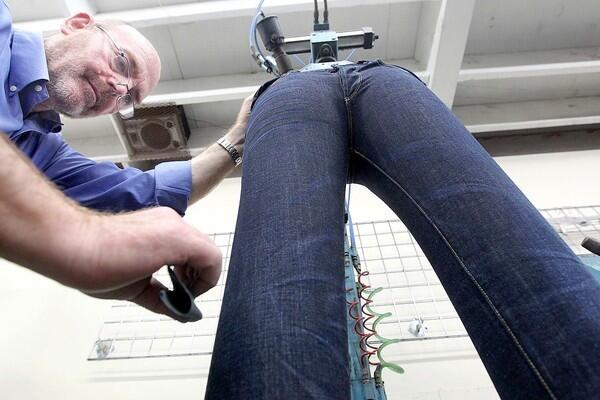
Emerging from the oven, the jeans are dry and ready for sanding. They’re placed on another mannequin for what Goldschmied calls “local abrasion,” a process designed to enhance the texture and increase the color contrast in the fabric. Using a square of sandpaper made especially for working with denim, an employee sands specific areas on the pants. “The sanding breaks up the indigo, so the white color of the thread inside comes through,” Goldschmied says.
He then dips a cloth in chlorine and goes back over the area he has just sanded to make the white areas even more white. (Christina House / For The Times)
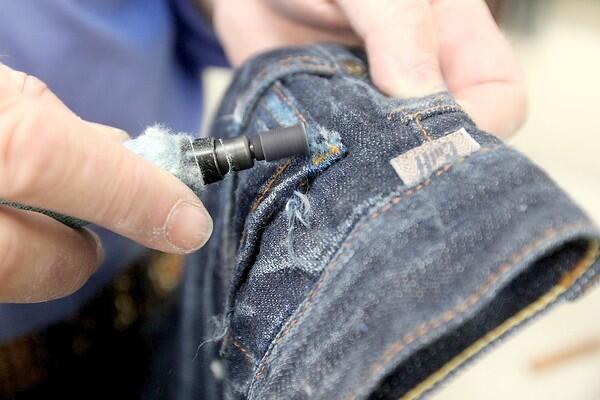
The jeans are washed yet again to neutralize chemicals used in processing and remove any residue created in the sanding process. (Some styles are treated with a tool that resembles a drill head with coarse sandpaper attached to it, resulting in an “aged” finish.) (Christina House / For The Times)
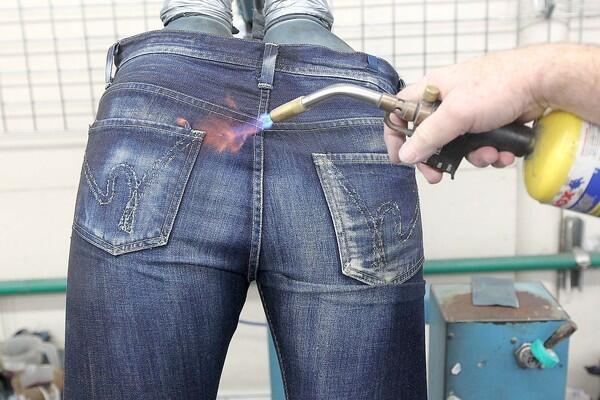
Finally, the jeans are placed back on the mannequin for some browning and aging detail, which is accomplished with a torch. A finisher runs the flame lightly over some of the whiter areas to lessen the contrast.
The entire process -- washing, stoning, curing and creasing -- takes about six hours. (Christina House / For The Times)


